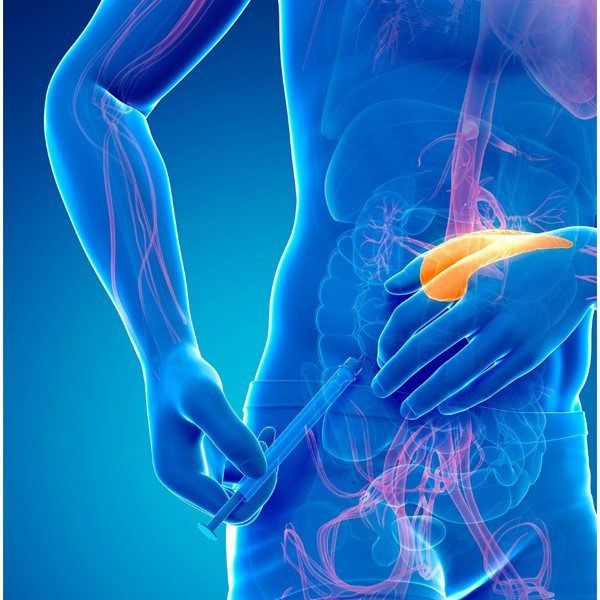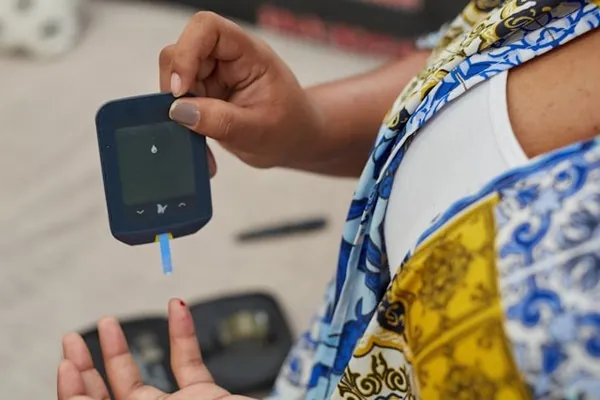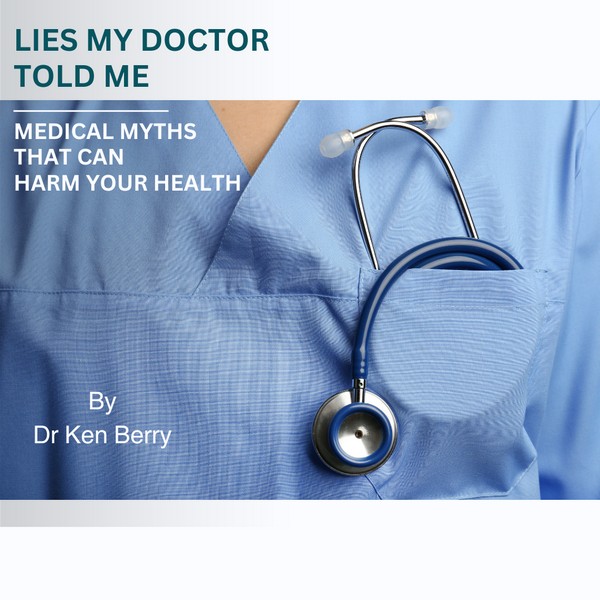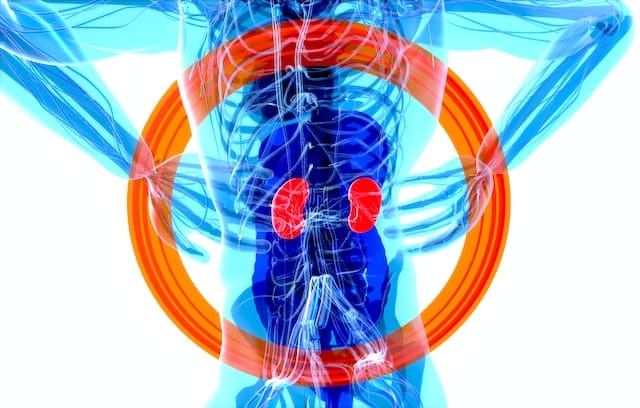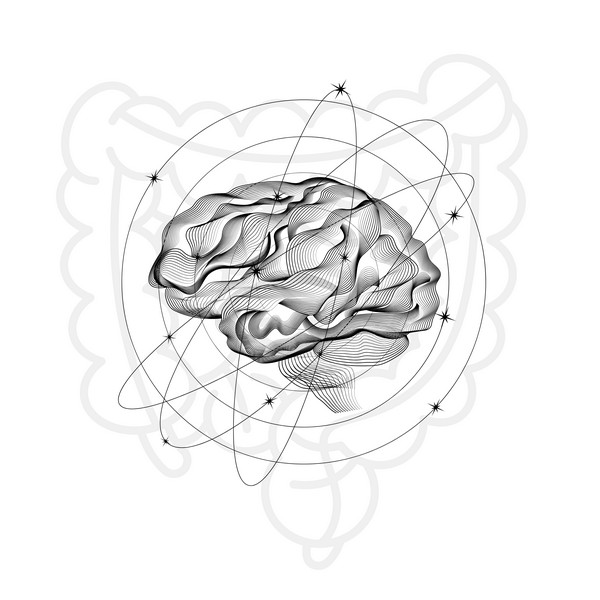Key Takeaways:
- Immediate Health Benefits of Reducing Sugar:
- In just two weeks, enjoy enhanced energy levels, weight loss, a reduced risk of chronic diseases, and improved vitamin C absorption for better collagen production and arterial health.
- Risks of Excessive Sugar Intake:
- High sugar consumption can lead to obesity, type 2 diabetes, and heart disease.
- Effective Strategies for Cutting Sugar:
- Uncover hidden sugar sources, opt for healthier food alternatives, stay hydrated, and get plenty of sleep.
Table of Contents
There are different types of sugars, broadly categorized as natural sugars and added sugars. Natural sugars, as the name suggests, come from natural food sources like fruits (fructose) and dairy products (lactose).
Added sugars are sugars and syrups that are added to foods during processing or preparation. These added sugars, such as high-fructose corn syrup, are often found in processed foods and beverages.
What Happens When You Consume Sugar?
Consuming sugar can lead to various health issues, such as weight gain, increased risk of diabetes, heart disease, accelerated skin aging, sugar cravings, depression, and cognitive decline.
- Consumption of added sugars has been closely linked to obesity as excess sugar intake can contribute to an increase in overall caloric intake, thus promoting weight gain.
- The impact extends to cardiovascular health, with studies suggesting that excessive sugar consumption may raise blood pressure, triglycerides, and the risk of heart disease.
- Mental well-being can also be affected, as fluctuations in blood sugar levels due to sugar consumption have been associated with mood swings, anxiety, and depression.
- The effects of sugar on skin health are notable, as sugar can lead to glycation, a process that can accelerate skin aging by damaging collagen and elastin proteins.
Lowers Vitamin C
Very similar, ascorbic acid (vitamin C) & glucose (sugar) compete for same receptors. Removing sugar from the blood is PRIORITY: More sugar you eat, less vit C is absorbed, reducing collagen synthesis; harming arterial lining (endothelium), leading to injury & inflammation. pic.twitter.com/Lap7YAQAGU
— Alan Watson (@DietHeartNews) February 3, 2024
Sugar might taste like a fleeting hug for your taste buds, but here’s a not-so-sweet fact: it’s got a bit of a rivalry with vitamin C that can affect your health in ways you might not expect.
Both vitamin C and glucose (a type of sugar) are like two kids fighting over the last seat on the bus; they both want to grab onto the same receptors in your body. But here’s the kicker: your body treats glucose like the guest of honor, giving it priority access over vitamin C.
Collagen Production: Less vitamin C means less collagen, crucial for skin, bones, and tissue health.
Arterial Health: Reduced vitamin C harms the arterial lining, leading to injury and inflammation—akin to potholes on a road.
Eliminating sugar can help vitamin C get back in the game, promoting better collagen synthesis, and keeping your arteries and skin happier. It’s a simple switch with a potentially big impact on your health. Think of it as choosing the hero of your body’s story. Will it be Team Sugar, leading to a plot twist filled with health woes? Or Team Vitamin C, starring in a tale of vitality and vigor? The choice is yours.
Increased Risk of Obesity
Sugar consumption is linked to weight gain and an increased risk of obesity due to the high caloric content of sugary foods and beverages.
Sugar can lead to an imbalance in the body’s energy equation, causing individuals to intake more calories than they burn. This surplus of calories is then stored as fat, contributing to gradual weight gain over time.
Added sugars, commonly found in processed foods and sugary drinks, offer little to no nutritional value while significantly increasing overall caloric intake.
As a result, consumption of these sugary products can disrupt metabolic functions, leading to an increased risk of obesity and related health issues.
Higher Risk of Type 2 Diabetes

Sugar intake can elevate blood sugar levels, increasing the risk of developing Type 2 diabetes, a chronic condition characterized by insulin resistance and impaired glucose metabolism.
When sugar is consumed, the body’s insulin production may not be able to keep up with the demand, leading to insulin resistance over time. This dysregulation can result in higher blood sugar levels, placing added stress on the pancreas to produce more insulin.
The constant cycle of sugar spikes and crashes can ultimately contribute to the development of Type 2 diabetes.
Increased Risk of Heart Disease
TRIGLYCERIDE MATTERS: A high fasting triglyceride level is so often a reflection of a high carb diet So cutting sugar and starchy carbs helps We found on average the triglyceride level dropped by a third in those who went low carb Published here https://t.co/5jK4nl1Y2z pic.twitter.com/qk0hJpFpyN
— Dr David Unwin (@lowcarbGP) April 13, 2024
Sugar can raise the risk of heart disease by promoting inflammation, insulin resistance, and contributing to factors like high blood pressure and abnormal cholesterol levels.
When sugar is consumed regularly, the body’s response to the continuous influx can lead to chronic inflammation, which plays a significant role in the development and progression of heart disease.
This inflammatory response not only damages the blood vessels but also disrupts the normal functioning of the heart.
In addition, the high levels of sugar consumption can lead to metabolic disorders like obesity and diabetes, further elevating the risk of cardiovascular issues.
Negative Impact on Mental Health
Consuming sugar has been associated with negative effects on mental health, including an increased risk of depression and cognitive decline due to fluctuations in blood sugar levels and inflammatory responses.
Sugar consumption can lead to spikes and crashes in blood sugar levels, which may contribute to mood swings and feelings of irritability.
In addition, excessive sugar intake can also trigger inflammation in the brain, impacting neurotransmitter function and potentially worsening symptoms of depression.
Chronic inflammation from dietary sugar has been linked to cognitive decline, as it can impair cognitive function and memory over time.
What Are the Benefits of Quitting Sugar for 14 Days?

Embarking on a 14-day sugar detox journey can lead to various benefits, including reduced sugar cravings, potential weight loss, improved skin health, lower risk of chronic diseases, and enhanced mental clarity.
During this sugar-free period, individuals often experience increased energy levels as their bodies adapt to using fats and proteins as primary fuel sources. This shift in energy production can also contribute to enhanced athletic performance and improved overall physical endurance.
Furthermore, cutting out excess sugars can stabilize blood sugar levels, reducing the risk of insulin resistance and diabetes. This dietary change may also lead to better dental health, as sugar is a primary contributor to tooth decay and gum disease.
Improved Energy Levels
Quitting sugar for 14 days can result in improved energy levels as the body adjusts to utilizing alternative sources of energy beyond glucose from sugar consumption.

By eliminating added sugars and refined carbs, the body can experience more stable blood sugar levels, preventing energy crashes and fatigue commonly associated with sugar spikes.
This reduction in sugar intake can also enhance mitochondrial function, which plays a crucial role in energy metabolism by efficiently producing adenosine triphosphate (ATP) – the body’s primary energy currency.
When the body relies less on quick sugar energy, it turns to burning fat for fuel through ketosis, leading to sustained energy levels and mental clarity.
Weight Loss
Eliminating sugar from your diet for two weeks may lead to weight loss as it reduces calorie intake, decreases fat storage, and improves metabolic processes related to weight management.
By cutting out sugar, you are essentially removing a major source of empty calories from your daily intake. This reduction in calorie consumption can create a calorie deficit, which is essential for weight loss.
Avoiding sugar helps to regulate insulin levels, which in turn can prevent excessive fat storage in the body. This process is crucial in managing body weight effectively.
Better Skin Health
Quitting sugar for a fortnight can promote better skin health by reducing inflammation, slowing down skin aging processes, and potentially improving conditions like acne that can be exacerbated by high sugar consumption.
During this sugar-free period, the body’s insulin levels stabilize, which helps prevent breakouts and reduce sebum production in the skin. In the absence of excess sugar, the skin is less prone to glycation, a process that contributes to collagen breakdown and accelerates aging.
By avoiding sugary foods and drinks, the skin has a chance to rejuvenate and maintain its elasticity. The reduction in inflammation can lead to a clearer, brighter complexion, giving the skin a natural healthy glow.
Reduced Risk of Chronic Diseases
Low carb for type 2 and type 1 diabetes pic.twitter.com/dPoHRN3c08
— Debra Scott (@DebandezScott) April 20, 2024
Quitting sugar for 14 days can lower the risk of developing chronic diseases such as heart disease and diabetes by minimizing factors like inflammation, insulin resistance, and blood sugar fluctuations linked to sugar consumption.
Reducing sugar intake for a short period can lead to significant improvements in overall health outcomes. By eliminating excess sugar from the diet, individuals can help regulate blood glucose levels, which is crucial in preventing insulin resistance and type 2 diabetes.
A temporary sugar detox can also help in reducing chronic inflammation in the body, a key driver for various conditions including cardiovascular diseases.
Cutting back on refined sugars for a couple of weeks can promote better hormonal balance and metabolic function, ultimately aiding in weight management and lowering the risk of obesity-related illnesses.
Improved Mental Clarity
A sugar-free period of 14 days may enhance mental clarity and cognitive function by stabilizing blood sugar levels, reducing brain fog, and supporting optimal brain health.

When blood sugar levels are unstable due to fluctuations caused by excessive sugar intake, it can lead to energy crashes, difficulty concentrating, and mood swings, ultimately affecting cognitive performance.
How to Quit Sugar for 14 Days?
To successfully eliminate sugar from your diet for a fortnight, start by thoroughly reading food labels to spot any sneaky sugar additives under various names like sucrose, high-fructose corn syrup, or dextrose. Swap out regular soda with water or herbal teas and opt for fresh fruits instead of processed sweets.
Incorporate nutrient-dense foods such as animal proteins and vegetables to keep energy levels stable throughout the day. Engage in regular physical activity to promote overall well-being and reduce sugar cravings.
Identify Hidden Sources of Sugar
To quit sugar effectively, it is crucial to identify hidden sources of sugar in processed foods, condiments, beverages, and snacks that may contribute to overall sugar intake.
Many packaged foods and drinks contain sugars under various names, such as fructose, sucrose, or corn syrup, which can be deceiving for those trying to cut down.
Reading labels meticulously is key; be wary of terms like ‘low-fat‘ or ‘diet‘ that often signal high sugar content.
Opt for whole foods like fruits and vegetables, which offer natural sugars along with essential nutrients.
Replace Sugary Foods with Healthier Options
Substituting sugary foods with healthier alternatives like fruits, vegetables, nuts, seeds, and whole grains can support a sugar-free diet and provide essential nutrients while satisfying cravings.
For instance, swapping a sugary cereal for a bowl of fresh berries topped with a sprinkle of chia seeds can offer a nutrient-dense breakfast option packed with antioxidants and fiber.
Another great fiber-rich swap is enjoying a crunchy apple with almond butter instead of a sugary granola bar, giving you a satisfying crunch combined with protein and healthy fats.
In terms of satisfying a sweet tooth naturally, opt for dates or figs to add a touch of natural sweetness to dishes without the need for processed sugars.
Stay Hydrated

Maintaining adequate hydration is essential during a sugar detox period to support metabolic processes, curb false hunger signals often mistaken for sugar cravings, and promote overall well-being.
Hydration plays a crucial role in managing sugar cravings as many times, the body mistakes thirst for hunger, leading to unnecessary snacking on sugary treats. By prioritizing water intake over sugary beverages, individuals can better regulate their appetite and stay on track with their sugar-free journey.
Water also helps flush out toxins from the body, aiding in the detox process. It’s important to listen to the body’s thirst cues and sip water throughout the day to maintain hydration levels and support the body’s natural functions.
Get Enough Sleep
Adequate sleep is vital for a successful sugar detox as it helps regulate hunger hormones, improve energy levels, and support overall health, including mental sharpness and emotional well-being.
Quality sleep plays a crucial role in managing sugar cravings by influencing the body’s hormonal balance. During a sugar detox, ensuring you get enough rest is essential for maintaining metabolic equilibrium and making healthier dietary choices.
Research has shown that lack of sleep can disrupt the body’s glucose metabolism, leading to increased cravings for sugary foods. By prioritizing sleep and establishing a consistent bedtime routine, individuals can better control their sugar intake and support their long-term health goals.

What Are the Possible Side Effects of Quitting Sugar?
Quitting sugar can lead to temporary side effects known as sugar withdrawal symptoms, including mood changes, cravings, and fluctuations in energy levels as the body adjusts to reduced sugar intake.
During the initial phase of eliminating sugar from your diet, it’s common to experience irritability, headaches, and fatigue due to the body craving its usual sugar fix. Cravings for sugary treats can be intense and may lead to feelings of frustration and restlessness.
As your body detoxifies from excessive sugar consumption, you might also notice disrupted sleep patterns and difficulty concentrating, impacting your overall productivity.
It’s crucial to stay hydrated and opt for nutrient-rich foods to support your body through this transition period. Energy levels may fluctuate as your body adapts to utilizing alternative sources of fuel.”
Sugar Withdrawal Symptoms
During a sugar detox, individuals may experience sugar withdrawal symptoms such as intense cravings, irritability, fatigue, headaches, and mood swings due to the sudden reduction in sugar consumption.
These symptoms can be quite challenging to deal with, often leading to difficulty concentrating and erratic behavior. The body’s dependence on sugar can manifest in physical discomfort like muscle aches, digestive issues, and even flu-like symptoms.
Sugar cravings can be particularly strong, causing individuals to seek out sugary foods to alleviate the withdrawal effects. The emotional toll of sugar withdrawal can be substantial, with individuals experiencing heightened anxiety, depression, and overall irritability.
Changes in Mood and Cravings
Quitting sugar can trigger changes in mood and cravings as the body adjusts to lower sugar levels, leading to emotional fluctuations, increased appetite, and intense desires for sweet foods.
During a sugar detox, individuals may experience irritability, fatigue, and difficulty concentrating as their bodies recalibrate to the new dietary changes. These mood swings can be intense and sudden, causing both physical and mental discomfort. The decrease in sugar intake can lead to fluctuating blood sugar levels, further exacerbating these feelings of unease.
The body’s natural response to a sudden reduction in sugar is to compensate by signaling powerful cravings for sugary treats. This can create a strong urge to indulge in treats that were once enjoyed regularly, making it challenging to resist temptation.
Temporary Energy Dips
As the body transitions away from relying on sugar for energy, temporary dips in energy levels may occur during a sugar detox period, affecting physical and mental performance until the body adapts to alternative fuel sources.
During this adjustment period, the body shifts from primarily utilizing glucose from sugar to tapping into its stored energy reserves like glycogen in the liver and muscles.
This transition can lead to feelings of fatigue, irritability, and cravings, as the body recalibrates its metabolic processes to use fats and proteins as energy sources.
Gradually, the body becomes more efficient at burning fats for fuel, entering a state of ketosis where ketone bodies provide a sustainable source of energy.
Biotiquest
Sugar Shift
- Transforms excess sugars into mannitol, which the body naturally eliminates, reducing inflammation.
- It enhances gut mannitol production, preventing harmful protein buildup.
- Increases butyrate production, improving gut and brain health.
Escaping the vicious cycle of carb addiction would be one of the best decisions you could make for a better life in general and much better health in particular. Some may need to push through withdrawal symptoms but the net benefits by far outweigh the minor nuisances that might temporarily pop up. A simple 14-day detox could turn out to be the springboard for sustainable lifelong positive decisions for health and wellness.
Remember to consult your professional healthcare provider before engaging in any health-related intervention.
Frequently Asked Questions
1. What happens to your body when you quit sugar for 14 days?
Cutting out sugar for just two weeks can have a surprisingly positive impact on your body.
2. Will quitting sugar for 14 days help with weight loss?
Yes, reducing your sugar intake can aid in weight loss, as sugar is a major contributor to excess calories and weight gain.
3. Can quitting sugar improve your skin?
Many people report clearer and healthier skin after eliminating sugar from their diet, as it can cause inflammation and contribute to acne.
4. What other health benefits can be expected from quitting sugar for 14 days?
Quitting sugar can also improve your energy levels, reduce cravings and hunger, and lower your risk of developing chronic diseases such as diabetes and heart disease.
5. Is it difficult to quit sugar for 14 days?
It can be challenging to eliminate sugar from your diet, especially if you are used to consuming a lot of it. However, with planning and determination, it is possible to successfully complete a 14-day sugar detox.
6. Are there any potential side effects of quitting sugar for 14 days?
Some people may experience withdrawal symptoms, such as headaches and irritability, in the first few days of quitting sugar. These usually subside quickly, and the long-term benefits far outweigh any temporary discomfort.
Research
Albrink, M.J., Lavietes, P.H., & Man, E.B. (1963). Vascular disease and serum lipids in diabetes mellitus: Observations over thirty years (1931-1961). Ann Intern Med, 58, 305-323.
Albrink, M.J., Man, E.B. (1959). Serum triglycerides in coronary artery disease. Arch Intern Med, 103, 4-8.
Albrink, M.J., Meigs, J.W., & Man, E.B. (1961). Serum lipids, hypertension and coronary artery disease. Am J Med, 31, 4-23.
Ahrens, E.H., Hirsch, J., Oette, K., et al. (1961). Carbohydrate-induced and fat-induced lipemia. Trans Assoc Am Physicians, 74, 134-146.
Allen, F.M., Stillman, E., & Fitz, R. (1919). Total dietary regulation in the treatment of diabetes. Monograph 11. Rockefeller Institute for Medical Research.
Banting, F.G., & Best, C.H. (1922). The internal secretion of the pancreas. J Lab Clin Med, 7, 465–480.
Chukwuma, C.I., Matsabisa, M.G., Erukainure, O.L., Ibeji, C.U. and Islam, M.S., 2019. D-mannitol modulates glucose uptake ex vivo; suppresses intestinal glucose absorption in normal and type 2 diabetic rats. Food bioscience, 29, pp.30-36.
Cran, B. (2018, March 2). The Academic Mob and Its Fatal Toll. Quillette.
Fox, C.S., Pencina, M.J., Melgs, J.B., et al. (2006). Trends in the incidence of type 2 diabetes mellitus from the 1970s to the 1990s. The Framingham Heart Study. Circulation, 113, 2914-2918.
Gaziano, J.M., Hennekens, C.H., O’Donnell, C.J., et al. (1997). Fasting triglycerides, high-density lipoprotein, and risk of myocardial infarction. Circulation, 96, 2520-2525.
Grotto D, Zied E. The Standard American Diet and its relationship to the health status of Americans. Nutr Clin Pract. 2010 Dec;25(6):603-12.
https://pubmed.ncbi.nlm.nih.gov/21139124/
Hatch, F.T., Arell, L.L., & Kendall, F.E. (1955). Effects of restriction of dietary fat and cholesterol upon serum lipids and lipoproteins in patients with hypertension. Am J Med, 19, 48-60.
Henderson, G. (2016). Court of last appeal – the early history of the high-fat diet for diabetes. J Diabetes Metab, 7, 8.
Hill, J.A., Agewell, S., Baranchuk, A., et al. (2009). Medical Misinformation: Vet the message. J Amer Heart Assoc, 18. Available at: [link]
Himsworth, H. (1949). The syndrome of diabetes and its causes. Lancet, 253, 465-473.
Himsworth, H.P. (1936). Diabetes mellitus: Its differentiation into insulin sensitive and insulin insensitive types. Lancet, 1, 127–130.
Joslin, E.P. (1941). A diabetic manual for the mutual use of doctor and patient. Philadelphia: Lea and Febiger.
Kim, C.Y., Lee, J.H., Kim, B.H., Yoo, S.K., Seo, E.S., Cho, K.S., Day, D.F. and Kim, D., 2002. Production of mannitol using Leuconostoc mesenteroides NRRL B-1149. Biotechnology and Bioprocess Engineering, 7, pp.234-236.
Kuo, P.T. (1967). Hyperglyceridemia in coronary artery disease and its management. JAMA, 201, 87-94.
Kuo, P.T., & Bassett, D.R. (1965). Dietary sugar in the production of hyperglyceridemia. Ann Intern Med, 62, 1199-1212.
Kuo, P.T., Feng, L., Cohen, N.N., et al. (1967). Dietary carbohydrates in hyperlipemia (hyperglyceridemia); hepatic and adipose tissue lipogenic activities. Am J Clin Nutr, 20, 116-125.
Mitchell, J. (2019, May 13). Heart and circulatory disease deaths in under 75’s see first sustained rise in 50 years. British Heart Foundation. Available at: [link]
Miselli, M.-A., Nora, E.D., Passaro, N., et al. (2014). Plasma triglycerides predict ten-years all-cause mortality in outpatients with type 2 diabetes mellitus: A longitudinal observational study. Cardiov Diabetol, 13, 135.
Morgan, W. (1877). Diabetes mellitus: Its history, chemistry, anatomy, pathology, physiology and treatment. London: The Homeopathic Publishing Company.
National Diabetes Data Group. (1979). Classification and diagnosis of diabetes mellitus and other categories of glucose intolerance. Diabetes, 28, 1039-1057.
Noakes, T.D., & Sboros, M. (2019). Real food on trial: How the diet dictators tried to destroy a top scientist. U.K.: Columbus Publishing Ltd.
Rabinowitz, I.M. (1930). Experiences with a high carbohydrate low calorie diet for the treatment of diabetes mellitus. Can Med Assoc J, 23, 489-498.
Reaven, G. (2012). Insulin resistance and coronary heart disease in nondiabetic subjects. Arterioscler Thromb Vasc Biol, 32, 1754-1759.
Reaven, G.M. (1988). Banting lecture 1988. Role of insulin resistance in human disease. Diabetes, 37, 1595–1607.
Reaven, G.M. (2005). Why Syndrome X? From Harold Himsworth to the insulin resistance syndrome. Cell Metab, 1, 9-14.
Reaven, G., Strom, T.K., & Fox, B. (2001). Syndrome X. The silent killer. The new heart disease risk. New York, NY: Simon and Schuster.
Reaven, G.M., Lithell, H., & Landsberg, L. (1996). Hypertension and associated metabolic abnormalities—the role of insulin resistance and the sympathoadrenal system. N Engl J Med, 334, 374–381.
Root, H.F., Bland, E.F., Gordon, W.H., et al. (1939). Coronary atherosclerosis in diabetes mellitus. JAMA, 113, 27-30.
Soetaert, W., 1990. Production of mannitol with Leuconostoc mesenteroides. Mededelingen van de Faculteit Landbouwwetenschappen, Rijksuniversiteit Gent, 55(4), pp.1549-1552.
Somogyi, M. (1959). Exacerbation of diabetes by excessive insulin action. Am J Med, 26, 169-191.
Therese, S., & Martin, B. (2015). Resist scientist! Countering degradation rituals in science. Prometheus, 32, 203-220.
Tzagournis, M., Chiles, R., Ryan, J.M., et al. (1968). Interrelations of hyperinsulinism and hypertriglyceridemia in young patients with coronary heart disease. Circulation, 38, 1156-1163.
U.S. Senate Select Committee on Nutrition and Human Needs. (1977). Dietary Goals for the United States, 2nd ed. Washington, D.C., U.S.: Government Printing Office.
Vegetable Oil: Health Risks You Might Not Know
Key Takeaways: Omega-6 fats from vegetable oils cause oxidative stress and inflammation. Reducing omega-6 intake and using stable fats can lower health risks. High triglycerides…
Insulin Resistance: What It Is & How to Manage It
Key Takeaways Insulin resistance leads to high blood sugar when cells stop responding to insulin. Often connected to obesity, poor diet, and physical inactivity. Symptoms…
Metabolic Health: What It Means and How to Improve It
Key Takeaways Metabolic health reflects how well your body processes energy and maintains stable blood sugar, cholesterol, and blood pressure. Key indicators of metabolic health…
Is Eating Sugar Really That Bad For Your Health?
Should You Really Be Concerned? In short, YES! Thank you, that’s all folks, and do have a good evening. Seriously though, extensive research has established…
Iron Overload: Symptoms & Prevention Tips
Key Takeaways: Iron overload happens when the body absorbs excessive iron, which can damage organs. Common symptoms include fatigue, joint pain, and skin changes. Early…
Diabetes: Everything You Need to Know
Signs of Diabetes: Recognizing the Red Flags
Key Takeaways Increased Thirst and Urination: High blood sugar leads to dehydration, causing excessive thirst and frequent urination. Unexplained Weight Loss: Diabetes can cause the…


